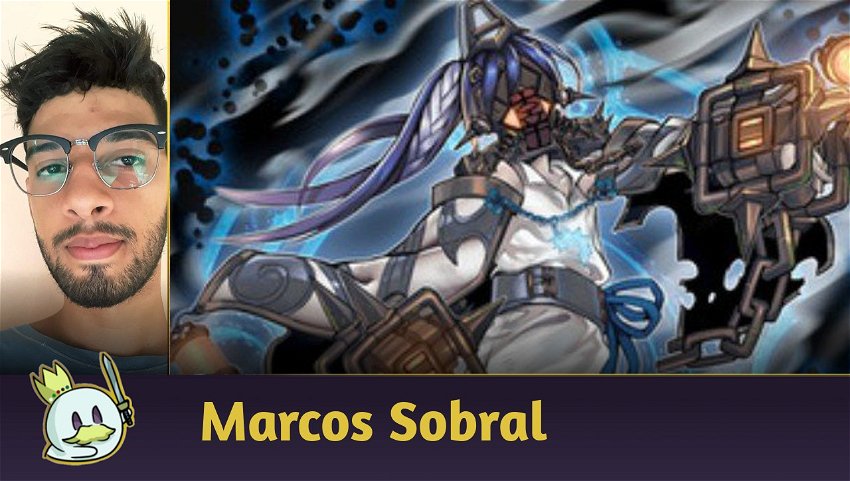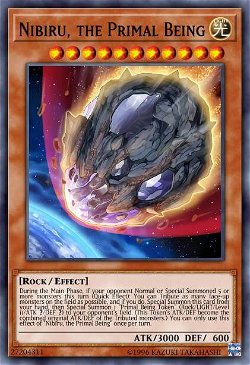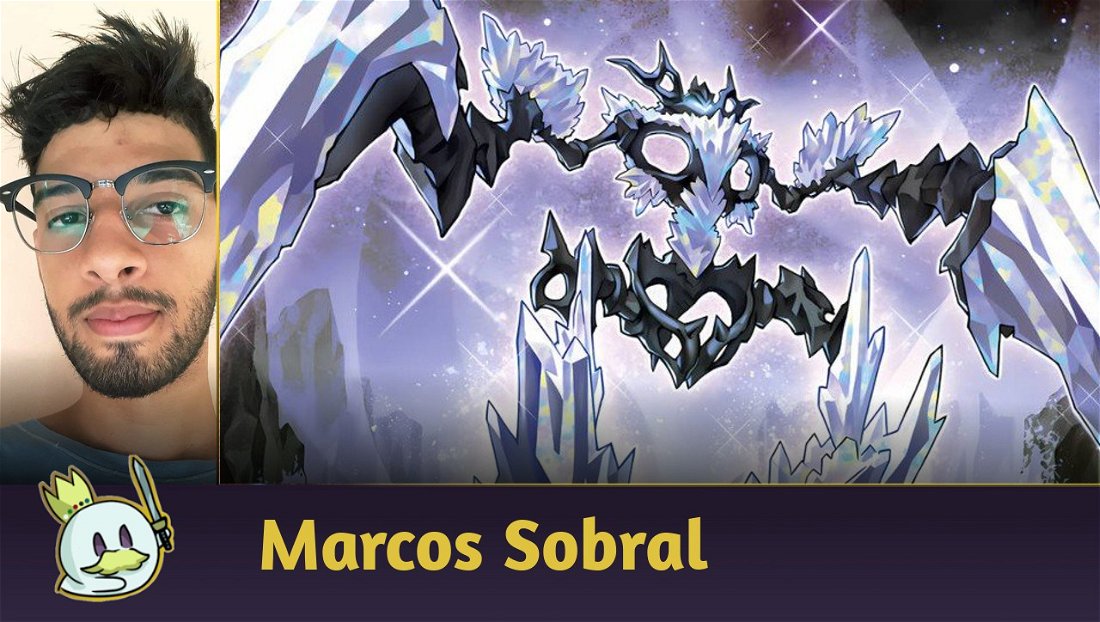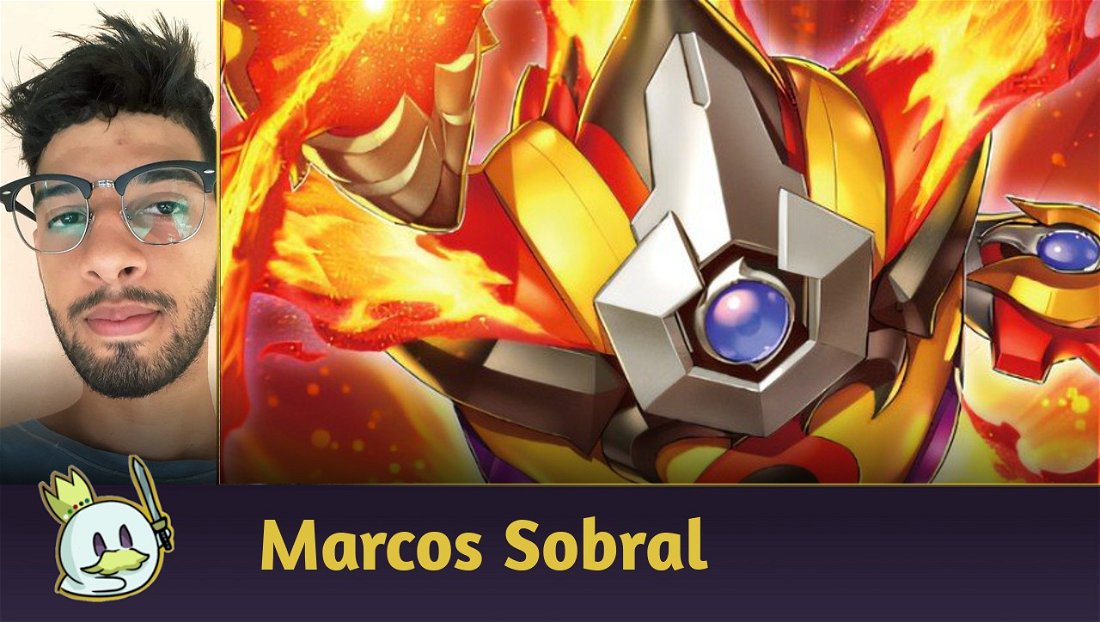About Unchained
Unchained is an archetype formed by Fiend type monsters with the attribute Dark, Fire and Water. The mechanic of the archetype is based on creating advantage by destroying your cards, which usually allows you to summon another "Unchained" monster directly from the deck to keep your combo going. Besides that, the archetype has link monsters with the effect of creating a link-summon using an opponent's monster as material, something quite useful to take away resources from your opponent.
Though it isn't a new archetype, the deck comes in as a viable candidate for the current metagame due to the great support cards recently released in Duelist Nexus, which have enhanced its consistency and resilience, besides also increasing the power level of your plays.
Check out how the new Unchained works!
Decklist
Main Deck

Here we have the low-level monsters in the archetype, which form the sub-archetype "Unchained Twins", and, it's through them you'll try to reach the other monsters in the archetype.
Unchained Twins - Aruha is your main starter; its great advantage compared to other monsters is that it can summon itself from hand by destroying one of your cards on board.
Unchained Twins - Rakea can also be a starter, but less efficient as it spends your "normal summon". Its differential is that its destruction effect is Quick, something quite useful, once that can be used to protect your other monsters from an effect which chooses them as target, for instance.
As for Unchained Twins - Sarama, it isn't exactly a starter, as it needs another "Unchained" card in your graveyard to activate its effect. But, it is very important during your combo, and, also, in the grind game, due to its effect of recycling your trap cards.

Now we reach the high-level monsters, called "Unchained Soul", and used in less quantity as they are mostly bad to draw, due to how hard it is to summon them.
Unchained Soul of Sharvara is one of the new support cards and is also one more starter for the deck. Its effect is practically a mixture of the "Unchained Twins" Aruha and Rakea, besides having the additional effect of playing a trap straight from the deck.
Unchained Soul of Shyama is another new card, and, though quite useful, is considered a "garnet" as it isn't easily summoned from hand. Usually, it is the first monster you'll try to summon from your deck.
Abominable Unchained Soul is an old monster of this archetype, and, before the supports, was used in a higher quantity. Now, only one copy is enough. Its effect can be used as an extender if your plays are interrupted, and also as interaction during your opponent's turn.

Abomination's Prison is the deck's "route", but, with the differential of being able to add any card of the archetype to your hand, including your trap cards. Besides that, it has the additional effect of summoning a monster from your deck if destroyed when it is on board, something that can be relevant to play around cards such as Droll & Lock Bird.
Abominable Chamber of the Unchained is a trap that works as an extender or follow-up, whereas Escape of the Unchained is an interaction trap. However, just like your "route", your traps share the effect of summoning "Unchained" monsters from the deck if they are destroyed while on board, and are very important during your initial combo.

Though it is more consistent than ever, Pot of Prosperity is here to help the deck find the necessary card to start its combo, once your plays need a combination of 2 cards to work.

The deck has a lot of space for techs, so, I opted to use only handtraps, them being the most generic as possible, once they are adequate options against the main deck in the format (Kashtira), besides being the most recommended ones in such an open format, in which you can face the most various decks.
Extra Deck

Unchained Soul Lord of Yama is the only consistence card in your extra deck, and it is extremely important for your deck, and during your initial combo, besides also being a good way to come back into the game if your board is disabled.
As for Unchained Soul of Rage, it is the main interaction in the archetype, due to its Quick effect, which guarantees a good board control to your deck.

Unchained Soul of Anguish has an effect similar to Unchained Soul of Rage, but which can only be used on your turn. This way, it is only useful when you face a pre-established board.
Unchained Abomination is the boss monster of the archetype, and it is very good to break boards, once you can destroy up to 3 cards in a single turn through its effects, besides being able to open the way for an "otk".

With the arrival of the new supports, now the deck can abuse the D/D/D engine, which really helps to raise the deck's skill ceiling, which can now set up 4 interactions on its final board.

To give more utility to your D/D/D engine, made up only of xyz monsters, the deck also uses Divine Arsenal AA-ZEUS - Sky Thunder, which can be useful in many matches.

Dharc the Dark Charmer, Gloomy is a utility card, due to its effect of "stealing" a Dark type monster from your opponent's graveyard. Besides that, when destroyed, you can add an Unchained Twins - Sarama to your hand as a follow-up.

Just like "Dharc", Muckraker From the Underworld is a very useful card, but this time not because it messes with the opponent's graveyard, but your own, by reviving a Fiend type monster. Besides that, it can protect one of your monsters from being destroyed.

Knightmare Unicorn is a good monster option to be summoned through the effect of Unchained Soul of Rage in case there is more than one card on your opponent's board, aside from that, the card is a good "ladder step" to summon your Accesscode Talker, an excellent game finisher.

Going through with the mechanic of using the opponent's monsters as material for your link-summons, Underworld Goddess of the Closed World is a great card option to deal with your opponent's towers, something important to have in the deck due to the possibility of Purrely being popular in the format.
The Goal of Unchained
Though it builds your play through the destruction of cards, Unchained's goal is to place Unchained Soul of Rage on your final board, which has the quick effect of creating a link-summon using itself and an opponent's monster summoned by special-summon as a material.
Besides that, to place more interactions on board, your initial combo uses your level 6 monsters to summon D/D/D Wave High King Caesar and more, your level 3 monsters are used for the xyz-summon of D/D/D Stone King Darius, which in return will be used as material for the summoning of D/D/D Deviser King Deus Machinex.
This way, you'll have 3 monsters on board, but with the possibility of having double the interaction, once the D/D/D monsters can use their effects more than once per turn, and Unchained Soul of Rage can bring one more interaction to your board.
Standard Combo
I'll leave below the standard combo if you open with Unchained Twins - Aruha + Escape of the Unchained:

> Firstly play Escape of the Unchained on board, and then activate the effect of Unchained Twins - Aruha to destroy it and summon it from your hand;
> When destroyed, Escape of the Unchained will trigger its activation. Use this effect to summon Unchained Soul of Shyama straight from the deck;
> Activate the effect of Unchained Soul of Shyama to destroy Unchained Twins - Aruha, and, afterward, use the effect of Unchained Twins - Aruha to summon Unchained Soul of Sharvara from your deck;
> Now use Unchained Soul of Shyama and Unchained Soul of Sharvara as material for the link-summon of Unchained Soul Lord of Yama;
> Next, organize the chain in the following way: chain link 1 from Unchained Soul Lord of Yama to add Unchained Twins - Rakea from your deck to your hand, and chain link 2 from Unchained Soul of Sharvara to play Abominable Chamber of the Unchained from your deck in your spell & trap zone.
> After the chain is resolved, normal-summon Unchained Twins - Rakea and use its effect to destroy Abominable Chamber of the Unchained.
> After the destruction of Abominable Chamber of the Unchained, use its effect to summon Unchained Twins - Sarama;
> Use Unchained Soul Lord of Yama and Unchained Twins - Rakea to summon Unchained Soul of Rage;
> Now, activate the effect of Unchained Twins - Sarama to summon Unchained Twins - Rakea on board face down and, next, destroy the "Rakea" itself;
> Activate the effect of Unchained Twins - Rakea when it is destroyed and summon another Unchained Twins - Aruha from your deck;
> Now, activate the graveyard effect of Unchained Soul of Shyama to destroy Unchained Twins - Sarama and cause it to be summoned from the graveyard to the board.
> With the destruction of your monster, you'll have one more chain to organize, so choose: chain link 1 from Unchained Twins - Sarama to summon another Unchained Soul of Sharvara from your deck and chain link 2 from Unchained Soul Lord of Yama, which banishes itself from the graveyard to summon Unchained Twins - Rakea;
If all went well, besides your link monster, you'll have two level 6 monsters and two more level 3 monsters.
> This way, use your two level 6 monsters to xyz-summon D/D/D Wave High King Caesar;
> Next, use your two level 3 monsters to xyz-summon D/D/D Stone King Darius and, right afterward, use it as xyz material for the summoning of D/D/D Deviser King Deus Machinex.
This way, your board will look like this:

Main Matches in the Format
The final board for Unchained is quite strong, mainly due to the D/D/D engine which the deck can access currently, which besides placing good interactions on board, can be used more than once per turn. This way, when we play first, we can deal with the main decks in the format post-Duelist Nexus really well, and this metagame should continue with Kashtira on top, followed by Purrely, Labrynth and the Spright variants.
Our main goal going first is that your board is vulnerable to boardbreakers such as Evenly Matched, Dark Ruler No More and Kurikara Divincarnate, however, at least at the beginning of the format forming itself, most players are using the handtrap approach, and Unchained can benefit from that as it can go around most of the popular techs.
As for when you play second, Unchained can be quite aggressive and has a good reach to break board, and, this way, it has an interesting matchup against Labrynth and Spright. However, against Purrely and Kashtira, it is a really different. Purrely, due to its unaffected boss monster, which can only be removed from the board in case you have a big enough volume of monsters to summon Underworld Goddess of the Closed World. And Kashtira because of its banish mechanic, both through its boss monster, Kashtira Arise-Heart and through Kashtira Fenrir.
So, against these decks, the matchup will depend a lot on the techs you have to interact with them before it even gets to your turn, once the best way to deal with them is preventing them from having an established board.
Final Words
So, what did you think of the deck? I hope you enjoyed getting to know more about it and that you have fun with it.
You're welcome to give your opinion in the comment section below. Cards Realm thanks you for your collaboration.















— Comentarios 0
, Reacciones 1
Se el primero en comentar